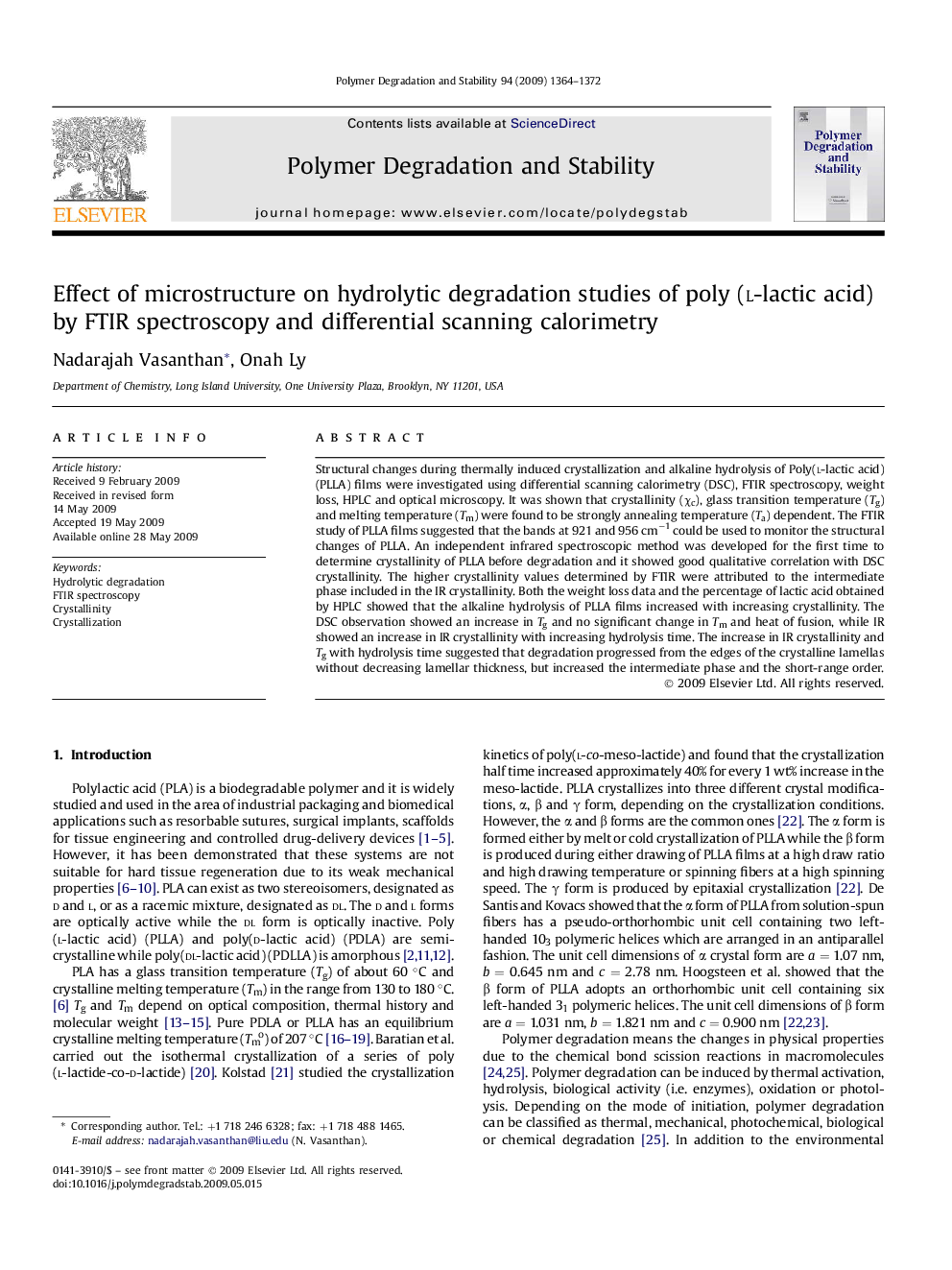| Article ID | Journal | Published Year | Pages | File Type |
|---|---|---|---|---|
| 5203916 | Polymer Degradation and Stability | 2009 | 9 Pages |
Abstract
Structural changes during thermally induced crystallization and alkaline hydrolysis of Poly(l-lactic acid) (PLLA) films were investigated using differential scanning calorimetry (DSC), FTIR spectroscopy, weight loss, HPLC and optical microscopy. It was shown that crystallinity (Ïc), glass transition temperature (Tg) and melting temperature (Tm) were found to be strongly annealing temperature (Ta) dependent. The FTIR study of PLLA films suggested that the bands at 921 and 956Â cmâ1 could be used to monitor the structural changes of PLLA. An independent infrared spectroscopic method was developed for the first time to determine crystallinity of PLLA before degradation and it showed good qualitative correlation with DSC crystallinity. The higher crystallinity values determined by FTIR were attributed to the intermediate phase included in the IR crystallinity. Both the weight loss data and the percentage of lactic acid obtained by HPLC showed that the alkaline hydrolysis of PLLA films increased with increasing crystallinity. The DSC observation showed an increase in Tg and no significant change in Tm and heat of fusion, while IR showed an increase in IR crystallinity with increasing hydrolysis time. The increase in IR crystallinity and Tg with hydrolysis time suggested that degradation progressed from the edges of the crystalline lamellas without decreasing lamellar thickness, but increased the intermediate phase and the short-range order.
Related Topics
Physical Sciences and Engineering
Chemistry
Organic Chemistry
Authors
Nadarajah Vasanthan, Onah Ly,
